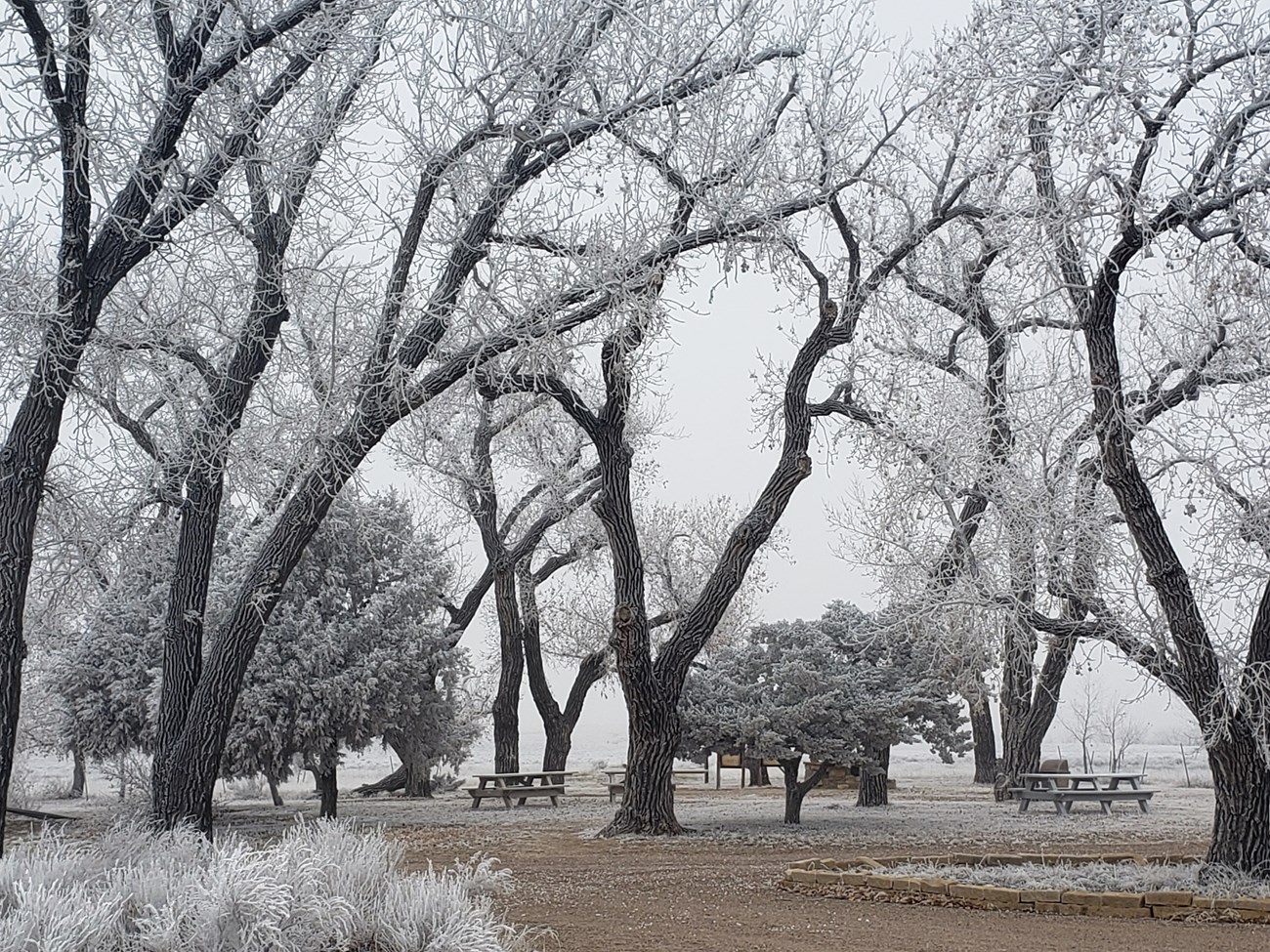Last updated: September 10, 2025
Article
Climate and Weather Monitoring at Sand Creek Massacre National Historic Site: Water Year 2023

NPS
Overview
Together, climate and hydrology shape ecosystems and the services they provide, particularly in arid and semi-arid ecosystems and across the Southern Plains (Woodhouse and Overpeck 1998). Understanding changes in climate, groundwater, and surface water is key to assessing the condition of park natural resources—and often, cultural resources.
At Sand Creek Massacre National Historic Site (Figure 1), Southern Plains Inventory and Monitoring Network scientists study how ecosystems may be changing by taking measurements of key resources, or “vital signs,” year after year—much as a doctor keeps track of a patient’s vital signs. This long-term ecological monitoring provides early warning of potential problems, allowing managers to mitigate them before they become worse. At Sand Creek Massacre National Historic Site, we monitor climate among other vital signs.
Reporting is by water year (WY), which begins in October of the previous calendar year and goes through September of the water year (e.g., WY2023 runs from October 2022 through September 2023). This article reports the results of climate monitoring at Sand Creek Massacre National Historic Site (Figure 1) in WY2023.
Reference: Woodhouse, C. A., and J. T. Overpeck. 1998. 2000 years of drought variability in the central United States. Bulletin of the American Meteorological Society 79(12): 2693–2714. https://doi.org/10.1175/1520-0477(1998)079%3C2693:YODVIT%3E2.0.CO;2

NPS
Climate and Weather
There is often confusion over the terms, “weather” and “climate.” In short, weather describes instantaneous meteorological conditions (e.g., it’s currently raining or snowing, it’s a hot or frigid day). Climate reflects patterns of weather at a given place over longer periods of time (seasons to years). Climate is the primary driver of ecological processes on earth. Climate and weather information provide context for understanding the status or condition of other park resources.
Methods
A National Oceanic and Atmospheric Administration (NOAA) Cooperative Observer Program (COOP) weather station (Eads, Colorado 052446) located 15.5 mi (24.9 km) southwest of Sand Creek Massacre National Historic Site has been operational since 1907 (Figure 1). This station provides a reliable, long-term climate dataset used for analyses in this report. Data from this station are accessible through Climate Analyzer.

NPS
Results for Water Year 2023
Precipitation
Annual precipitation near Sand Creek Massacre National Historic Site in WY2023 was 20.89″ (53.1 cm), 5.19″ (13.2 cm) more than the 1991–2020 annual average. This surplus occurred primarily in May and June, which received 6.12″ (15.5 cm) and 5.33″ (13.5 cm) respectively, both over two and half times the 1991–2020 average (Figure 2). January is typically relatively dry, but in WY2023, January received 1.28″ (3.3 cm), five times the average for that month. Monthly precipitation totals in February, July, August, and September were near average. Precipitation in all other months was substantially below average, with no rain recorded at the weather station in November and March. Extreme daily rainfall events (≥ 1″; 2.54 cm) occurred on 6 days, over twice the average annual frequency of 2.7 days. Extreme rainfall events occurred on 11 May 2023 (1.32″; 3.4 cm), 18 May 2023 (1.68″; 4.3 cm), 19 May 2023 (1.54″; 3.9 cm), 13 June 2023 (2.90″; 7.4 cm), 7 July 2023 (1.35″; 3.4 cm), and 4 August 2023 (1.10″; 2.8 cm).
Air Temperature
The mean annual maximum temperature in WY2023 was 66.8°F (19.3°C), 0.5°F (0.3°C) below the 1991–2020 average. The mean annual minimum temperature in WY2023 was 37.1°F (2.8°C), 0.4°F (0.2°C) below the 1991–2020 average. Mean monthly maximum and minimum temperatures in WY2023 differed by as much as 6.0°F (3.3°C; see June as an example) relative to the 1991–2020 monthly averages (Figure 2). Monthly maximum and minimum temperatures were generally cooler than the 1991–2020 averages in the cool season (October–March), and variable relative to the long-term averages in the warm season (April–September). Extremely hot temperatures (≥ 96°F; 35.6°C) occurred on 21 days in WY2023, similar to the average frequency of 23.3 days. Extremely cold temperatures (≤ 10°F; −12.2°C) occurred on 30 days, 50% more than the average frequency of 20.7 days.

NPS
Drought
Reconnaissance drought index (Tsakiris and Vangelis 2005) provides a measure of drought severity and extent relative to the long-term climate. It is based on the ratio of average precipitation to average potential evapotranspiration (the amount of water loss that would occur from evaporation and plant transpiration if the water supply was unlimited) over short periods of time (seasons to years). The reconnaissance drought index for Sand Creek Massacre National Historic Site indicates that WY2023 was wetter than the 1991–2023 average from the perspective of both precipitation and potential evapotranspiration (Figure 3).
Reference: Tsakiris G., and H. Vangelis. 2005. Establishing a drought index incorporating evapotranspiration. European Water 9: 3–11.

NPS
Report Citation
Authors: Kara Raymond, Andy Ray
Raymond, K., and A. Ray. 2024. Climate and Weather Monitoring at Sand Creek Massacre National Historic Site: Water Year 2023. Southern Plains Network, National Park Service, Pecos, New Mexico.
